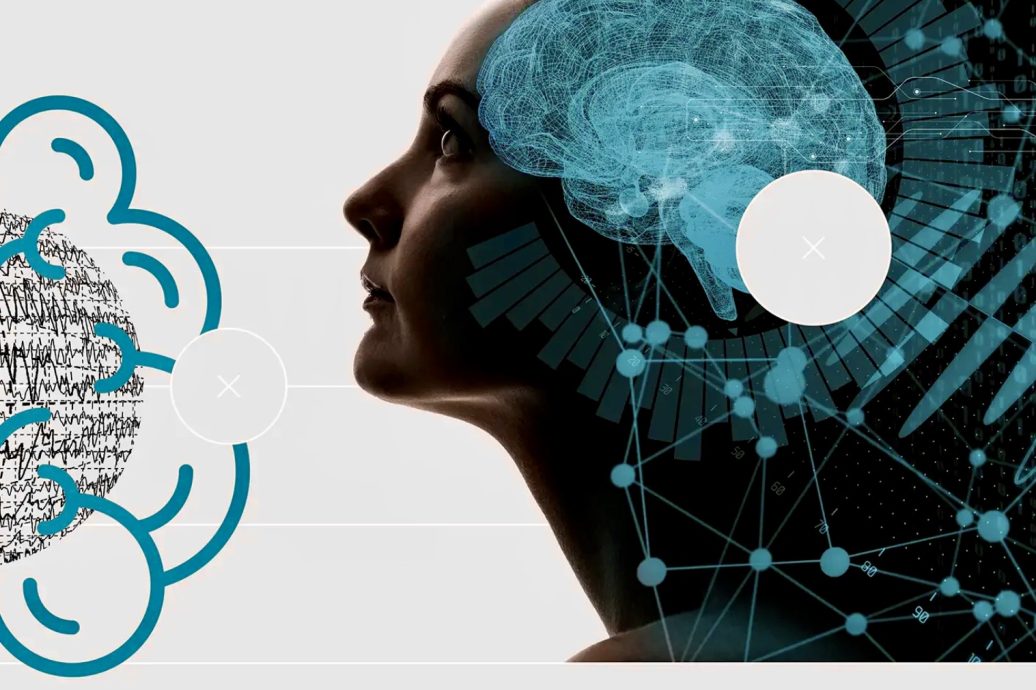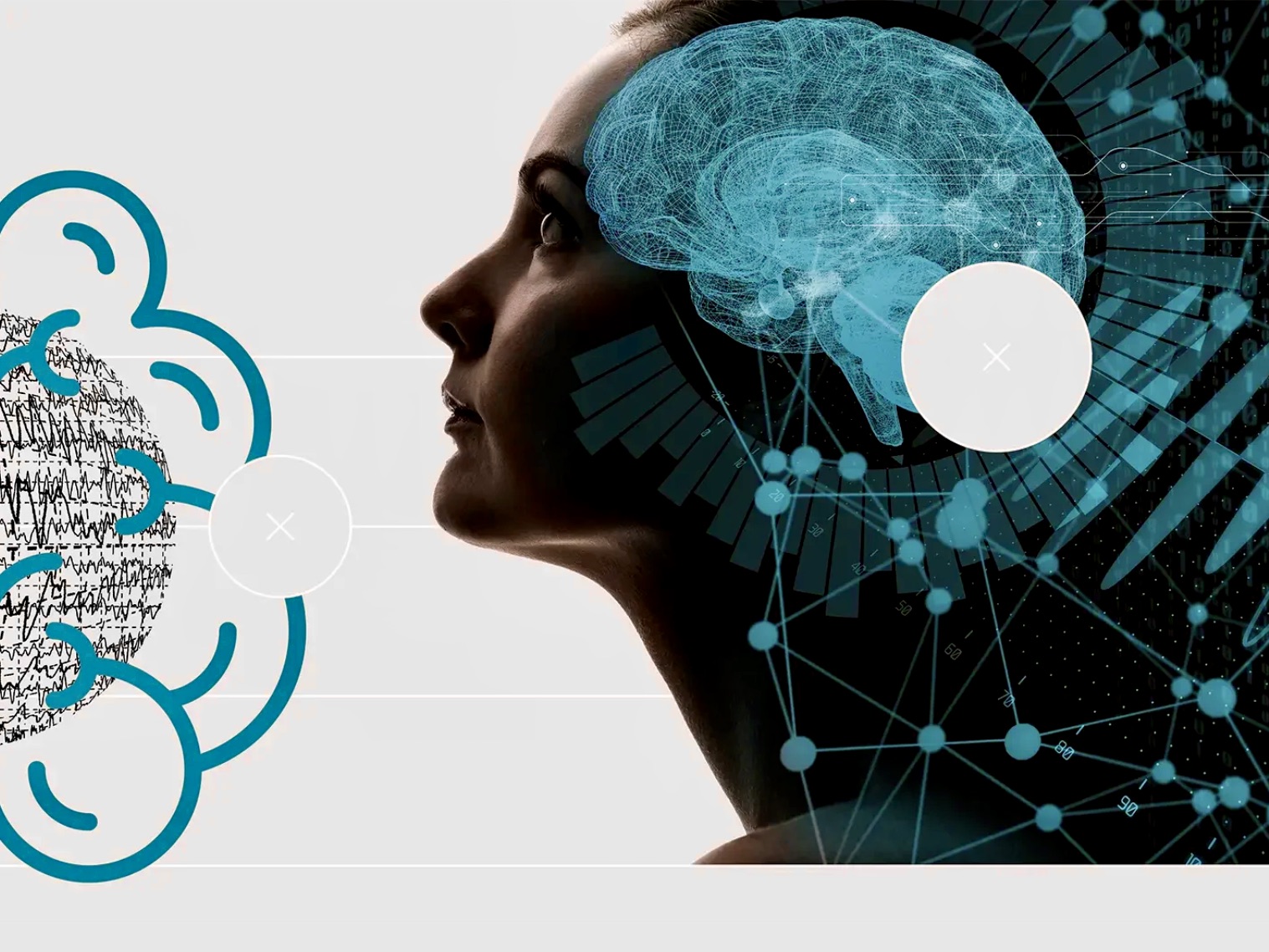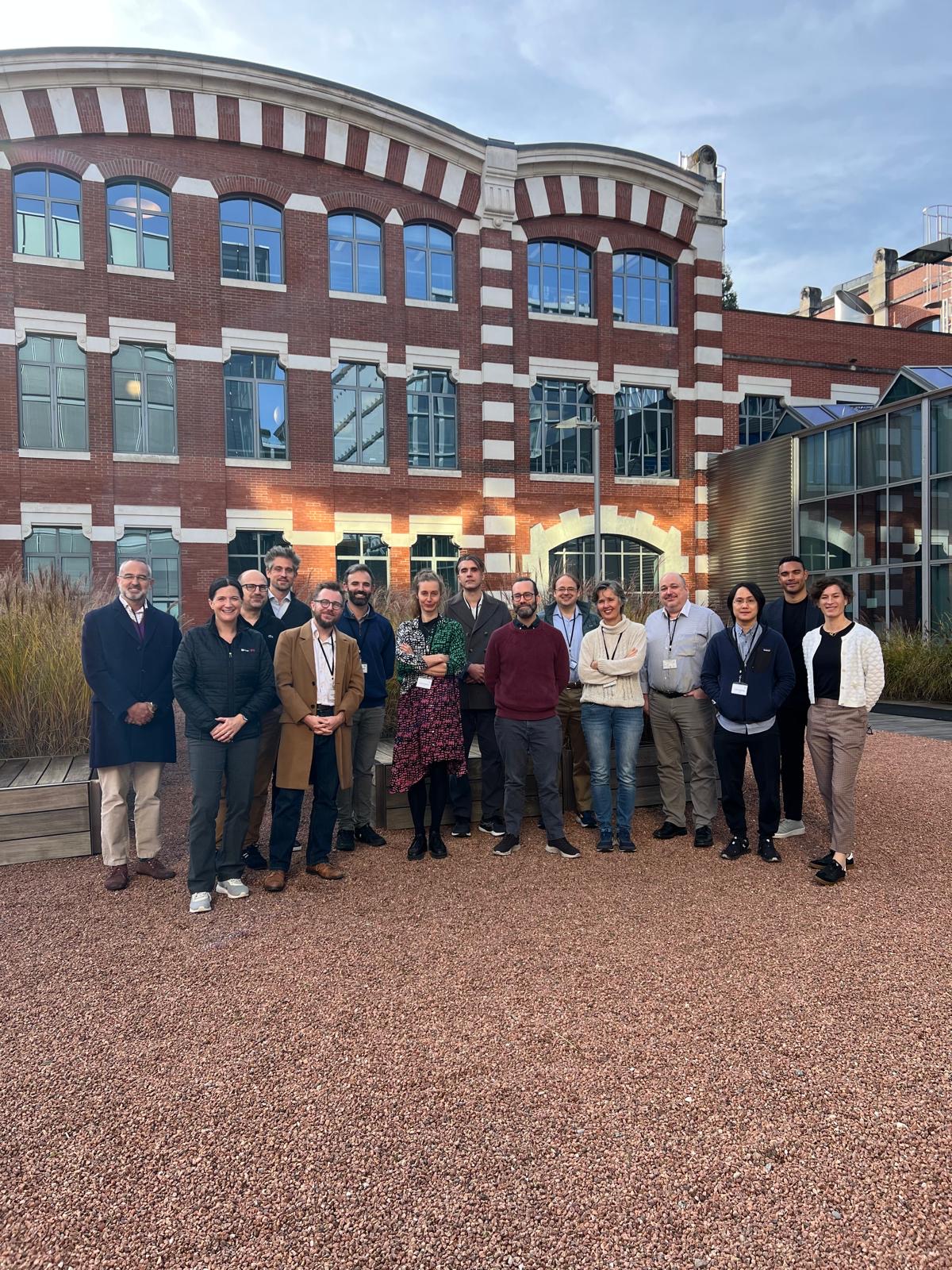
The idea of cognitive enhancement has long lived in the hushed halls of medical research and the wild frontiers of science fiction.
By John Heilprin
Oct. 14, 2025
While the conversation once centered on repairing damage or, one day, surgically upgrading our brains, the GESDA Science Breakthrough Radar® signals a more radical pivot: the rise of exogenous cognition. This concept involves offloading our most essential mental tasks to external, networked systems, creating a new partnership between our biological minds and non-biological intelligence.
Developments like the Wyss Center for Bio and Neuroengineering’s work on fully implantable, wireless brain-computer interfaces, or BCI, demonstrate that this strategic shift is already poised to transform everything from our daily work to our very identity. However, this new era of human capability — driven by accelerated AI and neuromorphic computing — raises immediate and profound questions about privacy, consciousness, and, crucially, global equity.
With the neurotechnology revolution accelerating, international philanthropic, R&D, and policy leaders recognize that decisions made now will determine whether these powerful new tools serve as a basis for universal human flourishing or become drivers of deep inequality. The urgency, particularly given the unprecedented access neurotechnology offers to brain data and human rights, has inspired a concerted, multi-stakeholder effort to establish responsible BCI-innovation practices and ensure that access to these breakthroughs is broadened to all countries, a vital diplomatic challenge that must keep pace with scientific speed. A key part of developing exogenous cognition is creating the advanced external systems that can augment us.
Switzerland’s own commitment to this is reflected in the Swiss AI Initiative, which is building Apertus, the country’s first large-scale, open, multilingual language model. As neuroscientist Chris Eliasmith notes in his GESDA Radar contribution, a focus on artificial cognition — building machines with human-level cognitive abilities — is essential for this.
The key to transcending the current limitations of large language models lies in combining them with techniques used in large brain models to better capture the dynamics of reasoning and online adaptability. He argues that despite their limitations, large language models are a significant step toward achieving true artificial cognition, but that this will ultimately require integrating them with brain-inspired models for dynamic reasoning.
“The pursuit of artificial cognition represents a pinnacle of human technological aspiration, encapsulating our relentless quest for knowledge and mastery over our environment,” said Eliasmith. “It is a journey that will undoubtedly reshape our society, our relationships with machines and, ultimately, the very essence of what it means to be intelligent — not only a testament to human ingenuity but a portal to a future replete with both profound challenges and unimagined opportunities.”
The hardware of tomorrow: From silicon to synapse, and the race for universal access
The race to create more energy-efficient and powerful computing has accelerated from a theoretical exploration toward practical application. The silicon-based architecture that has powered our digital world for decades is approaching its physical limits. In its place, a new era of neuromorphic computing is emerging, mimicking the human brain’s architecture to achieve a million-fold improvement in energy efficiency. Swiss companies are at the forefront of this movement, with SynSense pioneering ultra-low-power neuromorphic chips and AI startup inait SA developing biologically inspired software that simulates brain reasoning.
Brain-inspired hardware is rapidly moving from the lab to our daily lives. Companies like FinalSpark are already pioneering “wetware computing,” a remote platform that allows researchers to run experiments on living neurons. In Manchester, researchers developed nanofluidic memristors that mimic the memory functions of the brain, offering a path to devices that learn and adapt on the fly.
The momentum is supported by significant investment from major tech companies and startups alike, all vying to develop the next generation of brain-inspired hardware that can perform real-time learning. Yet, the current concentration of over 90% of investment and research activity in a few high-income nations poses a significant challenge. For these technological benefits to address the needs of the one-third of humanity affected by neurological disorders, new models are needed to rapidly deploy and scale BCI capacity hubs across diverse geographies.
The GESDA report also highlights that while AI can provide new approaches to scientific discovery, it requires careful supervision. Current AI systems often find and exploit correlations within datasets but lack a common sense appreciation of causal relationships, a fundamental limitation. Building AI with a concept of the world it exists in could be a monumental breakthrough, but it also raises the stakes.
This is a central concern for Oxford philosopher Nick Bostrom and his colleagues, who, in a paper titled “The emergence of machine superintelligence: A framework for risk assessment and governance,” outlined the potential for a “wild” leap from advanced AI to a superintelligent system, leaving humanity unprepared. The potential for rapid, disruptive advancement underscores the need for proactive governance frameworks that are designed to guarantee both the freedom to innovate and the freedom to benefit from the innovation.
The neuromorphic connection and the demand for responsible innovation
Just as superconductivity and quantum computing are inextricably linked, the promise of exogenous cognition is tied to the evolution of neuromorphic computing. While today’s AI systems are loosely inspired by neural networks, neuromorphic engineers are building hardware that physically emulates the brain’s architecture, creating a more powerful, energy-efficient platform for intelligence. The convergence of these disciplines is already transforming fields from robotics to medicine, though as one superintelligence study emphasizes, this efficiency could also accelerate the risks they are trying to contain.
The GESDA Radar underscores a powerful feedback loop: as new insights from neuroscience inform AI development, better AI will, in turn, improve human cognitive abilities. According to the report, the most effective interface between our brains and external cognitive systems will likely remain through our most tightly connected sensors — our vision and digits. The more intelligent external devices become, the more they will enable us to perform complex, simultaneous tasks. Within five years, the report estimates brain simulations will be capable of actuating real-world objects, and we may even be able to interact with “digital twins of biological organisms.”
Companies like Intel (with its Loihi series) and IBM (with its TrueNorth chip) are pioneering this hardware, developing systems that process sensory data and learn in real time with a fraction of the power of traditional processors. This brain-inspired approach is essential for creating truly autonomous systems, from robots that perform complex tasks like pattern recognition to vehicles with safer navigation.
The technology also extends to portable neuromorphic devices for rapid medical diagnostics and low-power, always-on AI for real-time sensor analysis in smart homes and wearable technology. As BCI development accelerates, moving rapidly from clinical to consumer markets (e.g., gaming and performance enhancement), there is a critical need for international guidelines to address ethical, safety, and societal challenges, including the crucial topic of brain data and human rights. This work aims to derisk investment by providing a stable and responsible regulatory environment.
Investment and outlook for accelerating commercialization — a call for anticipatory science diplomacy
The significant investment in this field reflects its transformative potential. As traditional silicon-based computing reaches its physical limits, a new era of brain-inspired hardware is emerging. The global brain-inspired computing market was valued at an estimated $1.56 billion in 2023 and is projected to grow to a remarkable $19.47 billion by 2032, demonstrating a compound annual growth rate of 33.4%. The growth is fueled by increasing demand for advanced computation systems that can handle vast amounts of data required by cutting-edge AI and machine learning.
In the same way that breakthroughs in superconductivity could lead to a new energy grid, advancements in neuromorphic computing will enable more powerful and efficient data processing, revolutionizing industries from healthcare to the automotive sector. Major players like Qualcomm, Samsung, and NVIDIA are all integrating elements of neuromorphic design into their processors to meet this growing demand, while companies like BrainChip are making significant strides in commercializing this technology for edge AI and autonomous systems.
However, a narrow focus on commercialization risks deepening global inequalities. The rapid growth of neurotechnology, which transcends national boundaries, demands a coordinated, multi-stakeholder response to ensure that neurotechnology serves humanity’s collective benefit.
Where the science and diplomacy can lead us
The 2024 GESDA Science Breakthrough Radar®, distilling the insights of 2,100 scientists from 87 countries, anticipates several upcoming breakthroughs in computing. This scientific anticipation must now be matched by anticipatory science diplomacy — a framework for renewed multilateralism that focuses on real-world early applications and acknowledges the complex geopolitical landscape. Key Radar references:
→2.1 Cognitive enhancement — The 21st century has seen an acceleration in our ability to decode cognitive states from both invasive brain implants and, increasingly, non-invasive techniques. It has also become possible to manipulate those brain states in increasingly targeted ways using a wide spectrum of methods, from electrical to chemical.
→2.1.1 Fundamentals of cognition — Cognition comprises elements including executive function, focus, cognitive flexibility and working memory. While these can be impaired by a variety of disorders, the most common pathway of deterioration is through ageing. For older individuals, cognitive enhancement can delay or compensate for cognitive decline, prolonging autonomy.
→2.1.2 Monitoring of brain states — Rapid advances in a wide range of technologies make it possible to measure brain-state markers from electrical potentials to blood oxygenation: newer penetrating brain implants are in trials, and tools like functional near-infrared Spectroscopy (fNIRS) devices are being miniaturised. Some are only used in research and clinical settings while others — EEG wearables, for example — are emerging onto the unregulated market for use by the general population.
→2.1.3 Neuromodulation systems — A wide variety of interventions can change cognitive function. Some are behavioural, including exercise, meditation, sleep hygiene or cognitive training. More targeted approaches include drugs and nutritional supplements, such as the attention-boosting drugs methylphenidate and modafinil, initially developed to treat cognition-limiting disorders. At present, however, the most widely discussed strategies involve brain stimulation via electromagnetic fields: transcranial magnetic stimulation (TMS), transcranial direct-current stimulation (tDCS) and deep brain stimulation (DBS).
→2.1.4 Exogenous cognition — Among the most important drivers of cognitive enhancement in the coming decade will be advances in artificial intelligence that allow us to integrate external cognitive systems with our biology. Machine-learning algorithms, applied to data gathered from proliferating brain-surveillance techniques, will enable a better understanding of the principles of cognition and memory, and thus lead to develop better closed-loop devices. A feedback loop will thus emerge: advances in AI will be based on new insights in neuroscience; and better AI will improve human cognitive abilities. These breakthroughs in human-machine interaction, and the fundamental questions they raise regarding human rights, data governance, and democracy, are the primary focus of contemporary science diplomacy.
→Invited contribution: Artificial cognition— Recent years have seen repeated remarkable advances in the creation of deep-learning systems, most recently large language models. There is a growing debate about whether or not these models represent a significant step towards artificial cognition — that is, towards building machines that can perceive, remember, reason and solve problems across many domains at human levels of performance. As we venture into the next 25 years, AI is poised to evolve in ways that will profoundly affect every aspect of human life. The goal of achieving true artificial cognition, as detailed by neuroscientist Chris Eliasmith, remains essential to this future. However, the pursuit of this pinnacle of human technological aspiration must be consistently guided by a collective commitment to responsible development and inclusive deployment, ensuring that the essence of what it means to be intelligent—and human—is safeguarded.











